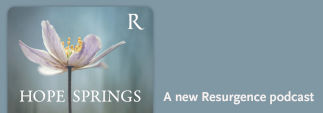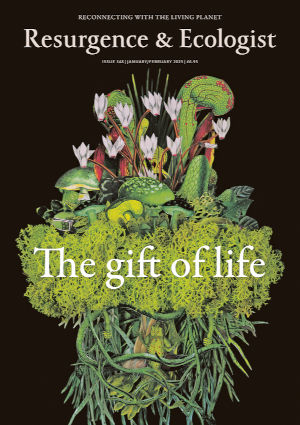Future historians will ponder the mycophilia that fruited sometime during the ‘long crisis’ that followed the 2008 financial meltdown. Just as the Victorians crazed for the geometric certainties of the fern, so the mushroom has emerged as a natural analogue for an era of tumult: confounding old categories, unsettling states of consciousness, and utilising the network effects that have become an ever more direct feature of our lives. Mushrooms are having a moment.
Now Richard Fortey, a decorated palaeontologist with a lifelong side passion for fungi, has plugged his hyphae into the matrix. His book weaves us through the wonders and mysteries of this most unusual of life forms, drawing on decades of experience as a scientist and guide, and via visits to far-flung locales like Australia and South Africa, as well as the offerings of his local woodland.
The format might sound routine for readers familiar with the tropes of ‘new Nature writing’. But Fortey departs from the genre in other ways, mostly eschewing politics, excess biography, or ‘the big idea’ in favour of something more modest and – for the traditionalist tired of hearing about every author’s feelings – perhaps more robust too. Close Encounters of the Fungal Kind is not a book inclined to drag natural history into experimental terrain. Rather it seeks to meet mushrooms on their own terms and aid the fungal neophyte to come to know them too. The result is a highly enjoyable read.
Understanding mushrooms (or rather the mycelial forms that fruit them to enable spore release) requires us to shift our sense of both time and scale. Happily, an entire chapter is devoted to the rotting of a single cherry tree. Here we’re brought inside the decomposition process on which so many of our basic natural processes depend and at which mycelia excel, their work arguably underappreciated.
The book is brilliant at bringing fresh energy to such otherwise familiar moments. When Fortey turns aside a fallen log, observe – really observe – the spectacular assembly of creatures, behaviours and fungal machinations at play, where millipedes “curl and twist in embarrassment” and springtails “hop like fleas”. As Fortey gets excited, and perhaps a little unnerved, by the “white threads of fungal mycelium … still hungry, still questing, until the last syllable of recorded time”, it’s hard not to share the feeling.
For the seasoned mycophile, other elements may feel more predictable. Luminescent fungi. Psychedelic fungi. Fungi that can hijack other creatures or parasitise a host. Perhaps wary of some readers’ familiarity, Fortey is good at serving up lesser-known examples or giving a fresh twist to an old idea. In a chapter titled ‘Vampires’, for instance, we encounter the remarkable Drechmeria gunnii, a Cordycep capable of turning hapless caterpillars into the biological equivalent of the Manchurian candidate – only with spore dispersal as the final objective, rather than Communist world domination! Less famous, Fortey grants, than Ophiocordyceps unilateralis (whose trick is to zombify carpenter ants and send them on a death march up a plant stalk for optimal light and humidity). But very cool, nonetheless.
My sense is that this is a book primarily aimed at initiates – perhaps people who have turned up to Fortey’s mushroom tours over the years – and on that basis it certainly succeeds. The tone is light and charming, with controversies such as the classification of psychedelic mushrooms as class A drugs in the UK, the popular but now disputed concept of the Wood Wide Web, and the issue of over-foraging, all navigated deftly. I did object, though, to Fortey using the international trade in a mushroom popular in Chinese medicine as an example of the “tragedy of the commons” (a dubious concept now well past its sell-by date). What he seemed to be describing was the tragedy of unregulated market forces.
While natural history struggles to make its breakthrough into mainstream education, Close Encounters of the Fungal Kind is exactly the type of book we need. Slip it into every A-level biologist’s bag. Let them unearth how little we still know, and how weird and wonderful the world about us can be.
Close Encounters of the Fungal Kind: In Pursuit of Remarkable Mushrooms by Richard Fortey. William Collins, 2024. ISBN: 9780008639686







